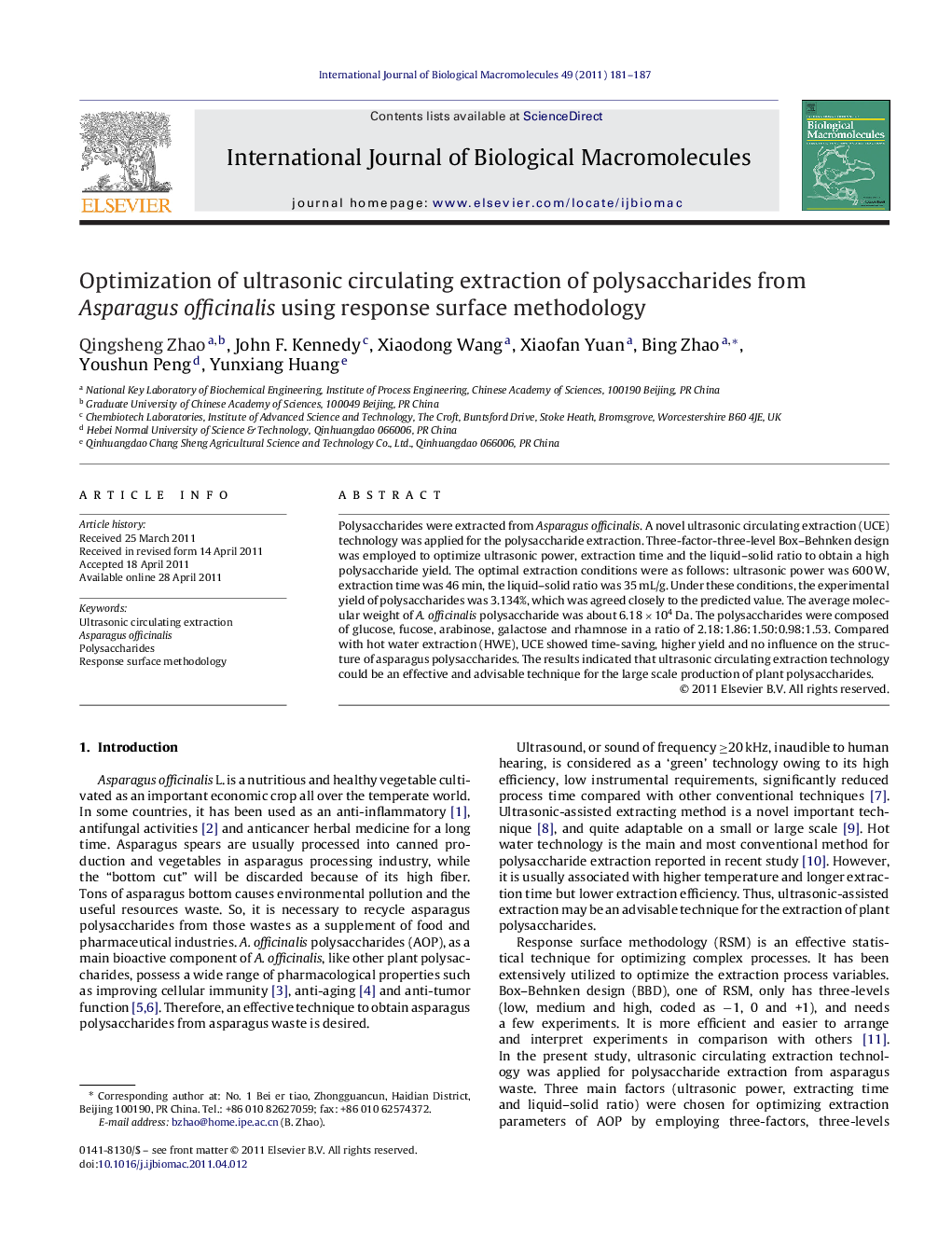| Article ID | Journal | Published Year | Pages | File Type |
|---|---|---|---|---|
| 1987264 | International Journal of Biological Macromolecules | 2011 | 7 Pages |
Polysaccharides were extracted from Asparagus officinalis. A novel ultrasonic circulating extraction (UCE) technology was applied for the polysaccharide extraction. Three-factor-three-level Box–Behnken design was employed to optimize ultrasonic power, extraction time and the liquid–solid ratio to obtain a high polysaccharide yield. The optimal extraction conditions were as follows: ultrasonic power was 600 W, extraction time was 46 min, the liquid–solid ratio was 35 mL/g. Under these conditions, the experimental yield of polysaccharides was 3.134%, which was agreed closely to the predicted value. The average molecular weight of A. officinalis polysaccharide was about 6.18 × 104 Da. The polysaccharides were composed of glucose, fucose, arabinose, galactose and rhamnose in a ratio of 2.18:1.86:1.50:0.98:1.53. Compared with hot water extraction (HWE), UCE showed time-saving, higher yield and no influence on the structure of asparagus polysaccharides. The results indicated that ultrasonic circulating extraction technology could be an effective and advisable technique for the large scale production of plant polysaccharides.
